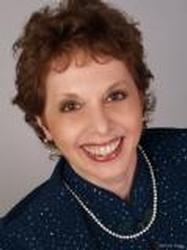|
 |
| Nicki S. Cohen, Ph.D. |
 |
When we think of the term "narrative," we typically conjure up words as the carriers of the tale. Our stories are either in oral or written form, and take us from one place to another. But while human beings tend to think and respond to the world through words, the musical arts have their own language. Music creates stories through a unique syntax and structure. Extending beyond that structure, music evokes sensory, aesthetic, physical, spiritual, and emotional responses to embellish our personal narratives. Through this sonic process, we are transported to places of healing and connection.
To be considered healing, music must be perceived as pleasurable and meaningful to the listener. One way of creating a therapeutic musical space is through "musicking," or the intentional act of making music together in the moment. It is based on improvised music, or music made up on the spot. This process of inventing musical narrative connects us to each other and links us to healthier aspects of our inner selves. We can weave our stories vocally or instrumentally, while we embellish the plot lines with body, nature, or other relevant sounds in the environment. It is the term "soundscape" that refers to those vibrations that resonate simultaneously during the process of creating music. One of my most poignant memories of soundscape was listening to two girls from the Central African Republic create an incredible story simply by slapping, splashing, and thumping river water. When I play a recording of their "water drums" to the students in my world music classes, they use words like "transportive" and "other-worldly" to describe the experience.
Music can carry us beyond ourselves to places that are lovely, nurturing, and curative. Because of its power, music can also take us to places dark and dangerous. Music therapists are trained to hear the musical narratives of our patients and to sense where the story needs to go, which is always in the direction of healing. To accomplish that, music therapists reach beyond their own musical training, biases, and cultural limitations to truly "listen" to others. They learn to support other's music with their own, sometimes to guide, sometimes to follow, but always to journey together towards health.
A number of my former students now work as music therapists in schools with special-needs children. One of the greatest gifts these therapists can bring to any classroom is ethnic percussion. Once a strong, supportive, rhythmic container is established, even children with poor impulse control, hyperactivity, or minimal attention spans will willingly slip into the music and discover their own personal stories. And like a supportive rhythm, the narrative structure of the music itself--its beginning, middle, and end--provides a safe container. What makes the sense of a musical narrative, its movement toward resolution, so therapeutic, is how it transports us from here to there, to a place that is, inarguably, better.
AIgen, K. (2005). Music-centered music therapy. Gilsum, NH: Barcelona Publishers.
Schaeffer, F.M. (1994). The soundscape: Our sonic environment and the tuning of the world. Rochester, VT: Destiny Books.
Water Drums (Baka Pygmies). (1997). [Compact Disk Recording]. The Big Bang. Elipsis Arts.
Wigram, T., Pederson, I.N., & Bonde, L.O. (2002). A comprehensive guide to music therapy. Philadelphia, PA: Jessica Kingsley Publishers.
|
 |
|




